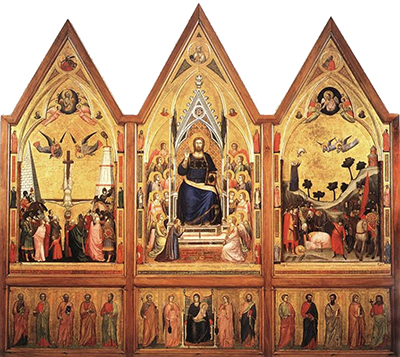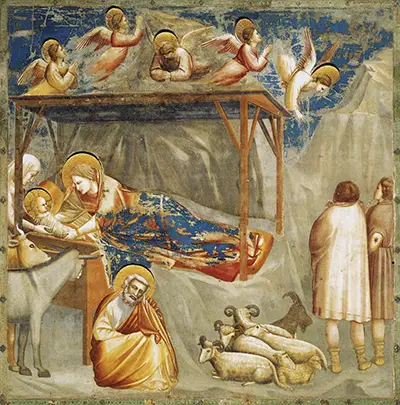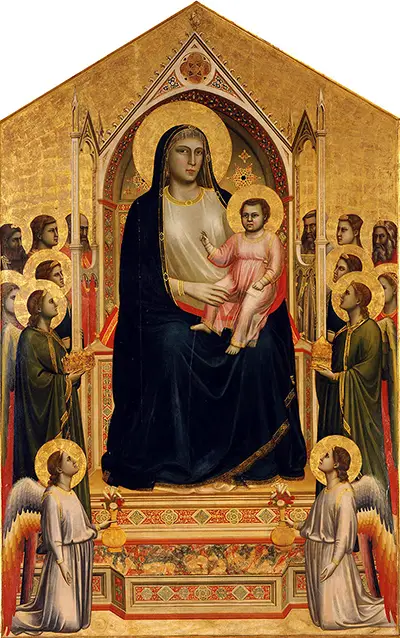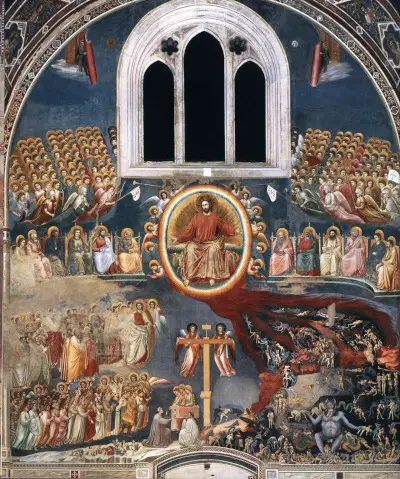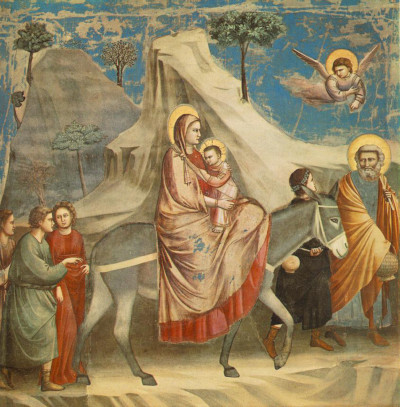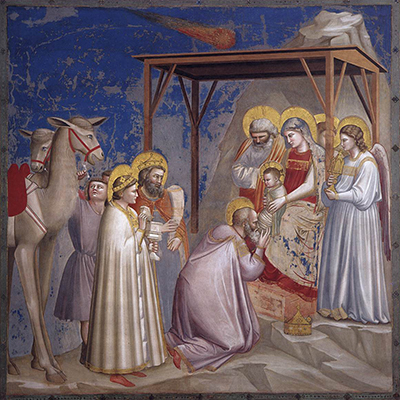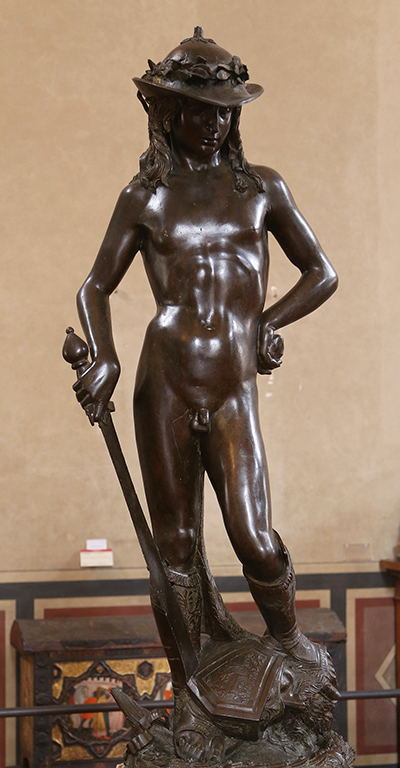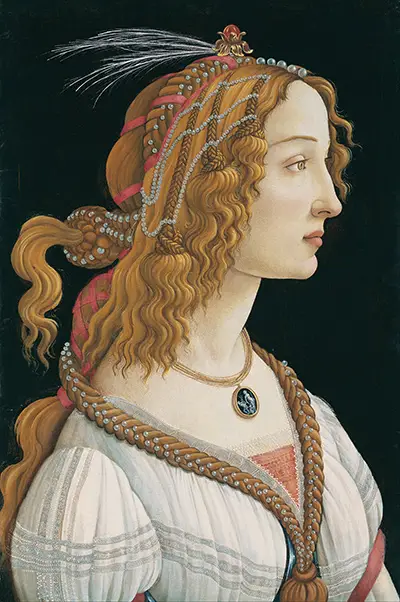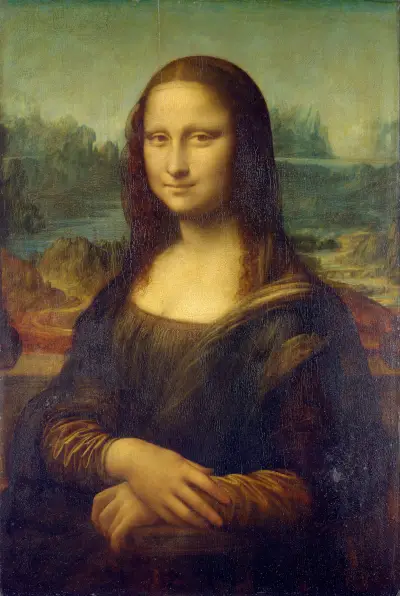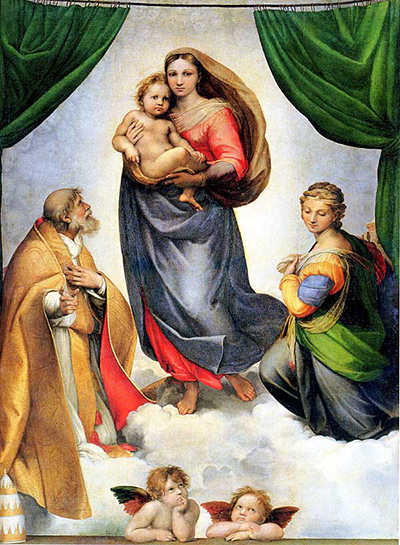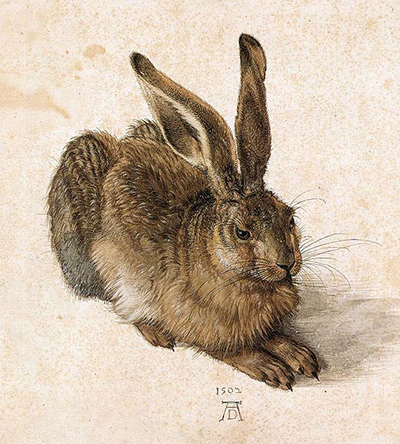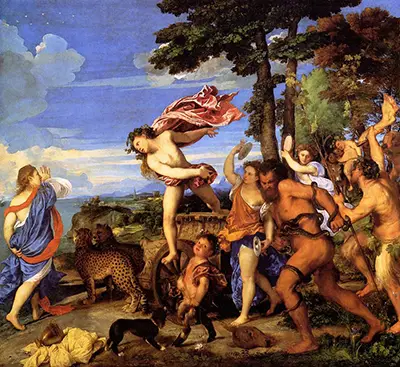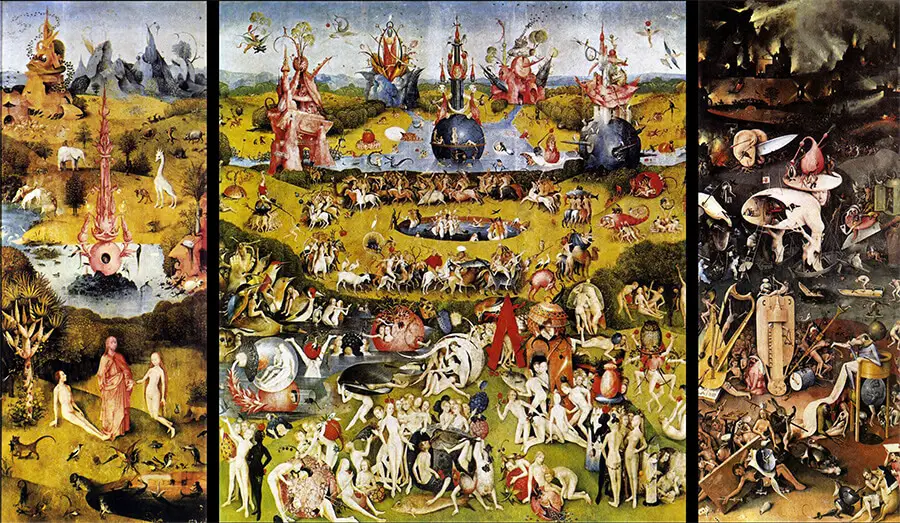The Death of the Virgin, also sometimes known as the Entombment of Mary, was produced by Giotto in 1310 using egg tempera on poplar wood.
The original work can today be found at the Gemäldegalerie, Kaiser Friedrich-Museums-Verein in the German city of Berlin and remains in remarkably good condition in comparison to some of the artist’s other work. Specifically, the vibrant coloring, typical of the artist, remains relatively intact.
Use of Symbolism
According to Giotto, The Entombment of Mary by Dr Steven Zucker and Dr Beth Harris, there is a strong use of symbolism within this piece. The small infant child is believed to represent the freed spirit of Mary, whilst her body is buried just below.
This is therefore a touching piece, in which the surrounding congregation look on in mourning, with Giotto famous for the way in which he depicted emotions within his figures. This relatively wide piece was produced for a small church in Florence. The tones of color used in the drapery and clothing can be found throughout this artist’s career, and were one of his hallmarks.
Transition in Italian Art
The Death of the Virgin reminds us of how significant Giotto was in moving on from the Byzantine era, bringing life and color to his portraits, whilst incorporating emotion. One can compare this to the likes of Duccio and Cimabue for an immediate visual indication of the transition.
Many artists who followed shortly afterwards were influenced by Giotto. His work was highly influential within the Proto Renaissance, which helped to transition Italian, and wider European art from the Byzantine towards the earliest phases of the Renaissance. Additional changes would appear in the use of perspective as well as more lifelike facial details.
Figures Explained
Most of the figures displayed around The Death of the Virgin are angels, as signified by their halos, produced in golden tones. Each is given a different tone for their clothing in order to allow each one to stand separately, giving them their own personality and meaning.
A careful study of the piece reveals that Giotto has included actions from some of them, such as blowing incense, talking amongst themselves, or contemplating this sad moment in their particular way. Additional saints have also been identified within this composition, helped by the solid condition in which it remains today (many other Giotto paintings have suffered from the centuries that have passed since, including lost detail and faded color).
Angle of the Composition
A further aspect about this painting that is worth noting is the overall angle of the congregation. There is a triangular format, with heads of the followers slowly leading upwards as you move towards the centerpiece. This helps to provide a clear hierarchy to the viewer of the importance of each figure within the painting.
Conclusion
We can conclude that Death of the Virgin by Giotto is a charming piece which perfectly captures many aspects of the artist’s style. Present are the emotions, the colors and the symbolism with which we remember Giotto, and it provides a fitting memory of his career. Its popularity has also been aided by the excellent condition that it enjoys today, as well as the prominent position that it holds within the Berlin art museum.
More Renaissance Artists



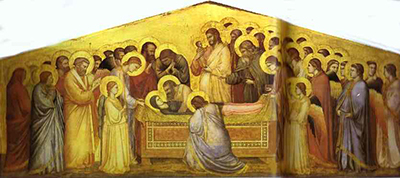
 Giotto.jpg)
 Giotto.jpg)
